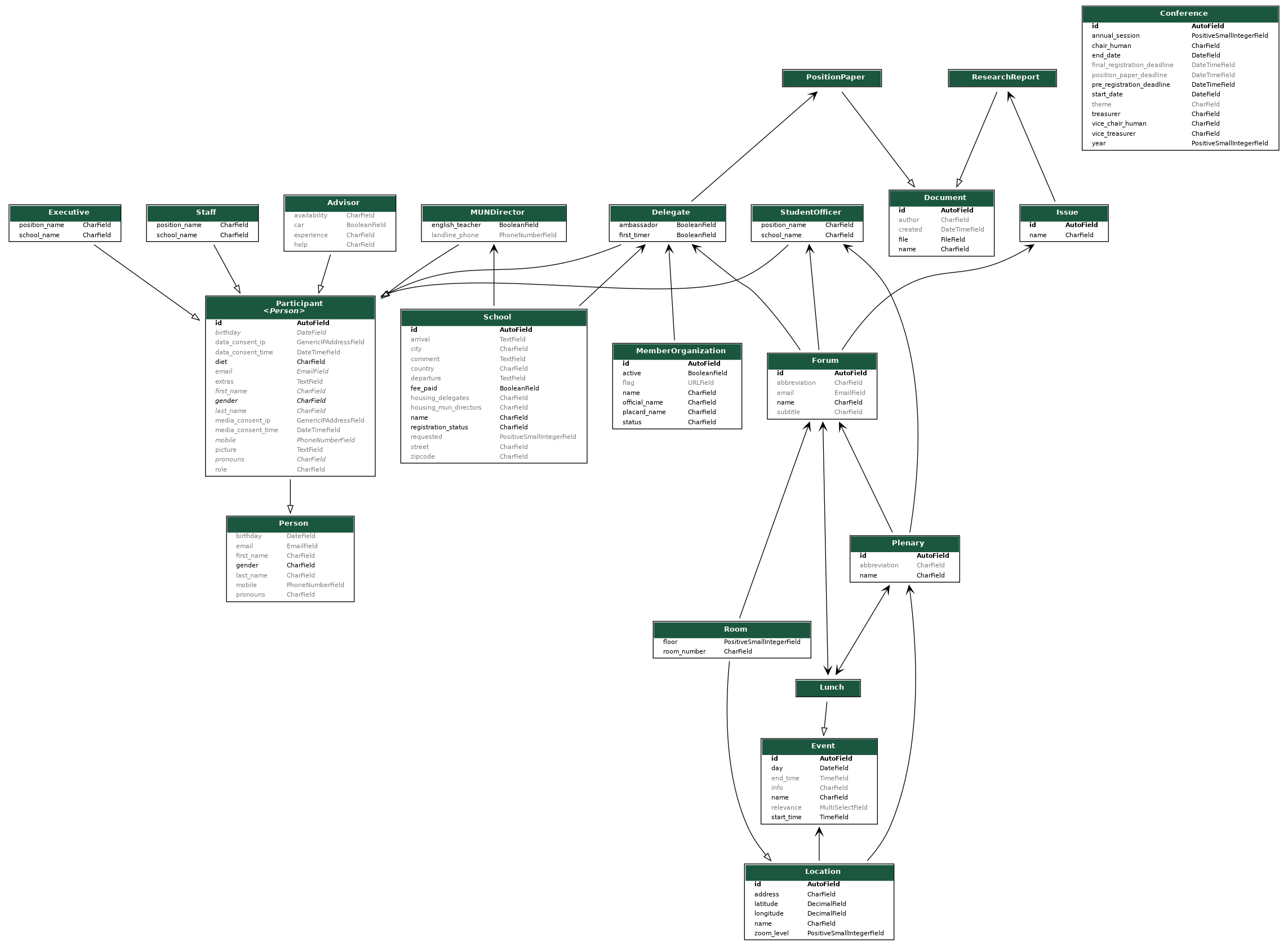Conference Management System Backend
This repo organizes the backend of a Conference Management System for Model UN conferences. It aims to allow smooth registration and administration of participants, allocation of delegations and general management of a conference.
Development Instructions
At the moment this project uses Python 3.6+ and Django 3.1.14. It is recommended to create a virtual environment inside the envs folder, e.g. by using venv.
To install the requirements after cloning the code and activating the environment (e.g. source envs/my-env/bin/activate), run
pip install -r requirements.txt
To start the django project in a server type
python manage.py runserver
To update the requirements according to your virtual environment, use
pip freeze > requirements.txt
Models Diagram
This diagram demonstrates the models and their fields and relationships.
To generate a diagram from all models excluding the internal classes use
python manage.py graph_models -a -t original -g --hide-edge-labels -X AbstractBaseSession,Session,User,AbstractBaseUser,PermissionsMixin,AbstractUser,Group,Permission,ContentType,LogEntry -o api_visualization.png
This requires graphviz to be installed, e.g. by using conda install grpahviz.
Initial data / Test data
As the database is empty in the beginning and filling it manually is a lot of work, two helper functions can be used:
-
A set of initial data entries for data, that will most likely be used at every conference, e.g. member organizations and forums, is provided in the
testdatadirectory. Simply load it as a fixture withpython manage.py loaddata testdata/forums.json
-
As the participants always change, fake participants can be generated for testing purposes. Use the custom commands in
management/commands/..., e.g.python manage.py setup_test_delegate -n 20
The
-nor--numberparameter is optional and specifies how many of this type shall be generated. To populate the database with all types, usepython manage.py setup_test_data
Deployment...
...for testing
In cms/settings.py
- add your domain to
ALLOWED_HOSTS = [] - add your frontend domain to
CORS_ORIGIN_WHITELIST
Furthermore
- add media (fonts, images) to
mediafolder - add test data .json files if you want to populate your DB with them
...for production
In addition to testing deployment: In cms/settings.py set
DEBUG = False- security key to a secure key that only you know
- set paths especially
FORCE_SCRIPT_NAMEif you don't want to serve under root domain URL, but under something likemydomain.org/cms
Serve static files by running python manage.py collectstatic which generates a static/ folder that needs to be served under mydomain.org/cms/static and includes the CSS, JS and image files. If the styling is missing, it might be a hint that the static files aren't loaded correctly.
Perform migration of the database by running python manage.py migrate.
From uberspace there are instructions for setting up Django projects: Django Guide Uberspace
